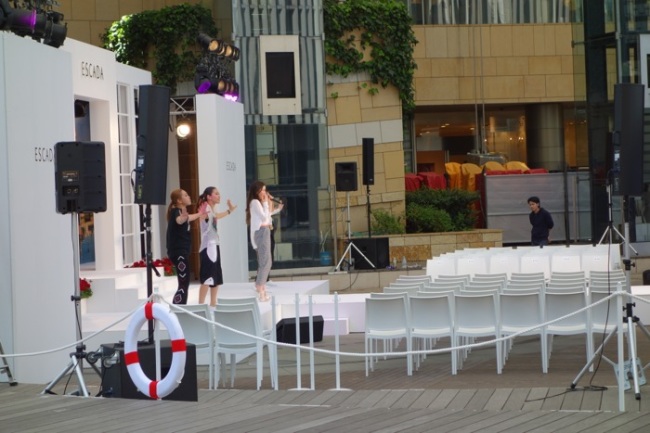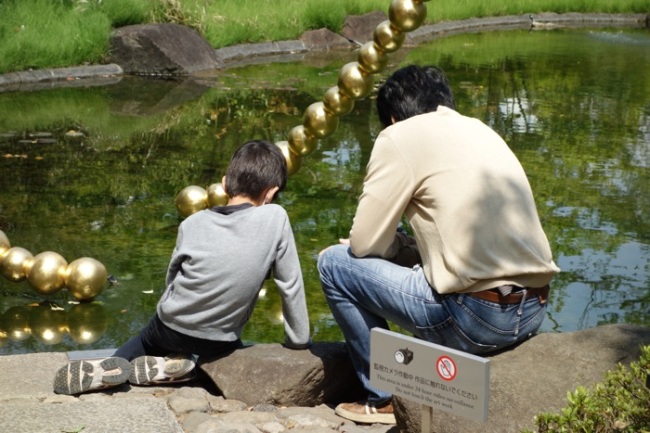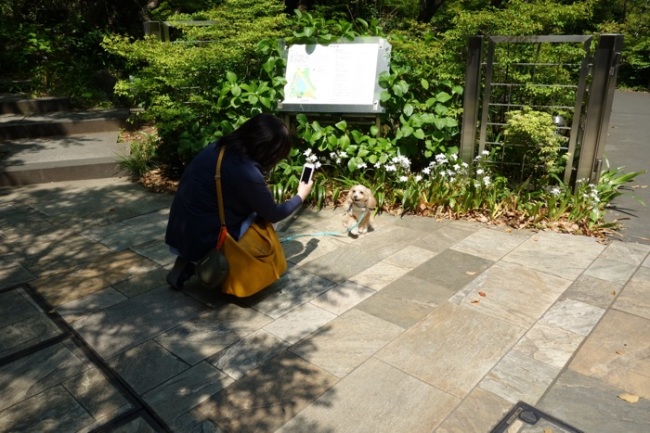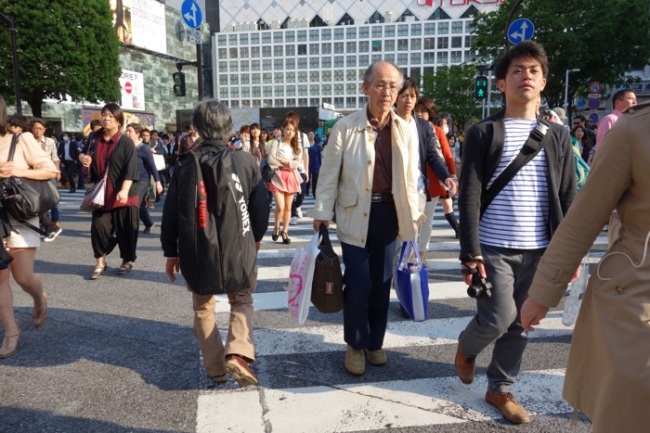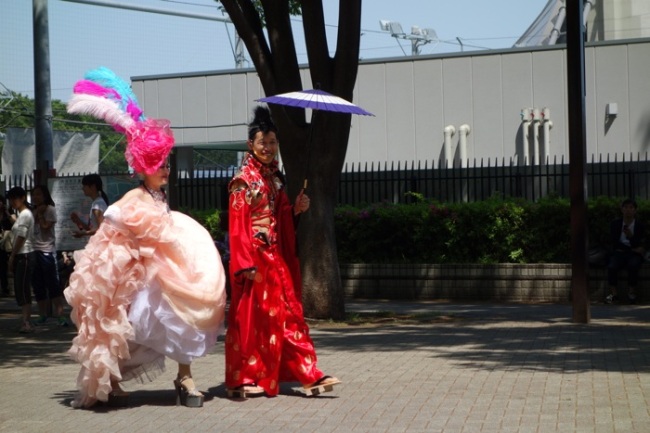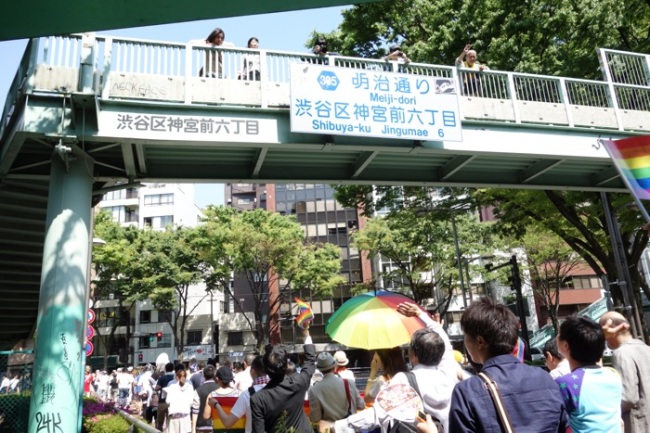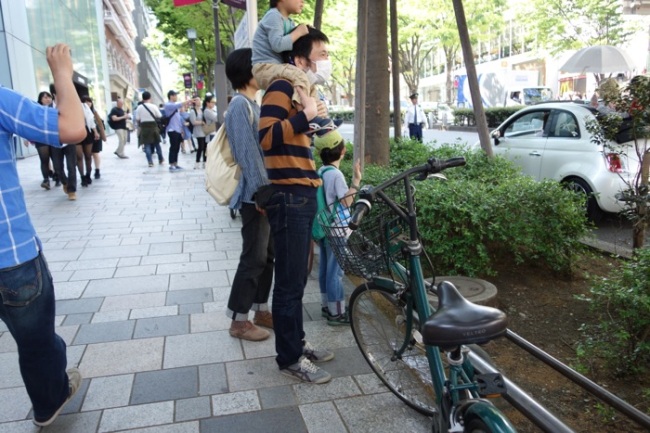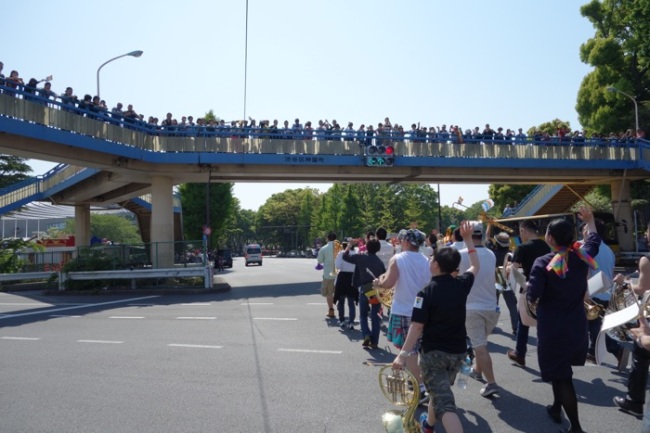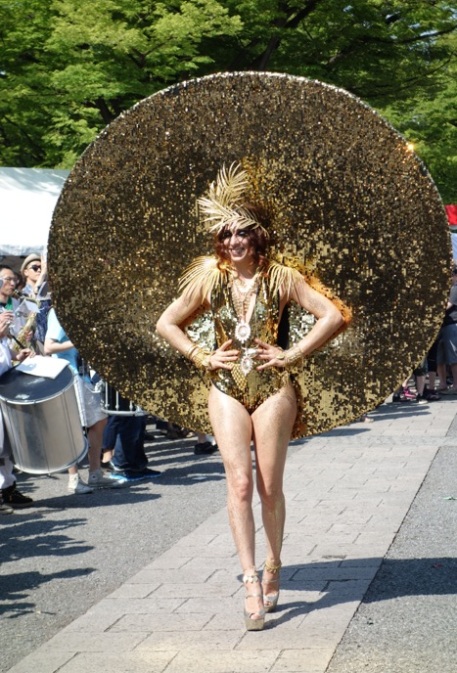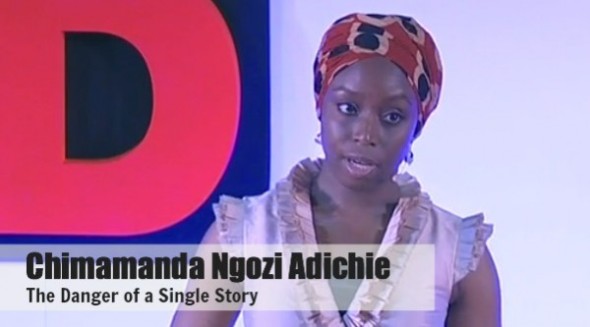So, the Western image of Japan is pretty much:



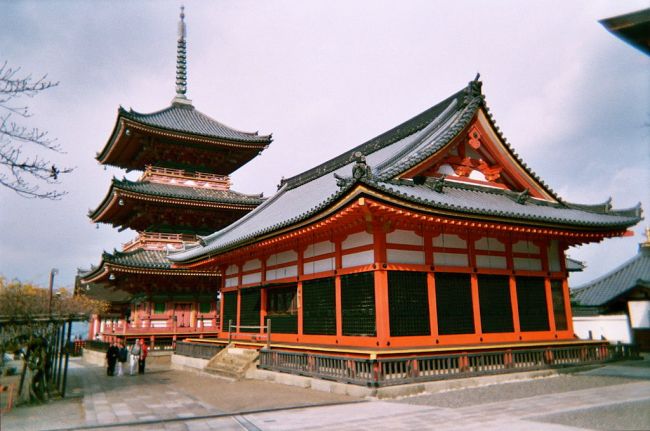

When, in reality, it’s more:

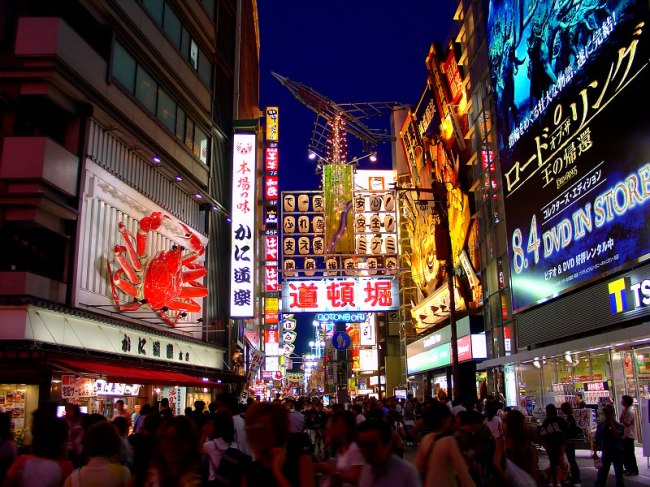


Japan is a remarkable country. Home to practitioners of flower arrangement, sushi making, swordsmanship, and some ridiculously beautiful architecture. Such as:

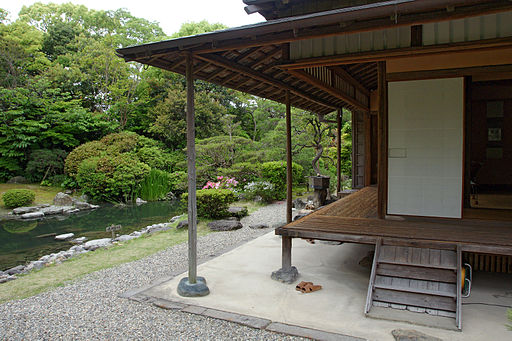


However, the number of those gorgeous old houses is decreasing and decreasing at a rapid pace. There are undoubtedly various reasons why, but I think there are three main ones:
1) Because of Japan’s high inheritance tax, many inheritors of old houses can’t afford to keep them. They put the houses up on the market, and a company will buy the land, bulldoze the house, and build a squat apartment building or a lovely new and Western-looking house on the property (depending on the area).
2) Old Japanese houses are a pain in the ass and a half to maintain. Tatami mats alone must be frequently cleaned, and will attract tatami mites if you’re not careful (and even if you are careful). You also have to replace them when they’re worn out. Apartments with tatami are much cheaper than apartments without, because tatami is a pain in the ass and a half and it’s seen as old fashioned, which brings us to:
3) Those houses may be gorgeous, but they’re old, and that makes them out of style. And this brings me to a point I find incredibly disheartening:
Many people in Japan prefer another country’s culture to their own. Not everyone, let me stress that. Maaaany many many Japanese people love their country fiercely and feel fiercely proud to be Japanese. It’s just that for decades, other cultures have been touted as popular and stylish, so a lot of people look to places like Paris and London and New York and California and fervently wish they could have lifestyles resembling the people they’ve seen in Hollywood movies and travel shows here.
Interestingly, on that point, there’s a strange irony in that, while many younger Japanese people will sigh and say, “Ahh, New York is so much better than Osaka/Tokyo/Nagoya,” those same kids will frown and balk at the idea of actually traveling to New York (because shy, language barrier, etc. – another topic for another post).
Meanwhile Japan is also a country where you can see posters of a Japanese guy with his arm around a white bride smirking over at the white groom, with a message that clearly reads as: “If you learn English, you too can lure yourself a white woman!” Of course, media in every country can be pretty heavy-handed and ignorant in terms of other cultures and sexism, so I guess it’s not all that surprising a thing to see.
There’re also the little comments I hear here and there: “Why did you come to Japan?” and the even more shocked, “You’re attracted to Japanese men?!” (That last one is, sadly, more justified than I first thought. I’ve met several white women who, when asked if they’re attracted to Japanese men, wrinkled their noises at the Japanese question-asker and said any number of variations on, “No.”)
I think part of the reason younger Japanese people may be less interested in sustaining Japanese culture is that, traditionally-speaking, art and practices tied in with Japanese culture take a long fucking time to do. A single kabuki performance can be more than four hours long, flower arrangement requires minute attention to detail, calligraphy takes decades to master, and so on and so on. For a generation who grew up with instant gratification and bullet trains and constant computer access, a lot of what defines Japan as a culture must seem like a lot of unwanted work to maintain. Many students have trouble even writing Japanese kanji by hand because they’ve been texting phonetically since they were children.
So while one of the aspects of Japan I’ve admired most is their uniquely Japanese sense of art and perfection, I will admit that it does take patience, and a lot of it. From ikebana to Noh to kintsugi, you can see the painstaking results of an artisan putting every ounce of his or her effort into making something as close to perfect as it can be. In today’s world, that just isn’t as widely attractive a concept as it used to be.
But back to the old houses. Last night, I had a chat session with my lawyer/architect duo in Osaka. They’re both in their mid-sixties and they both grew up in those traditional old houses. Morita grew up in Miyazaki:

and Okada grew up in Imaicho, Nara (outlined in red):

During my talks with Morita and Okada (not their real names), I’ve learned a tremendous amount about juuuust-slightly-post-war Japan. Morita’s house was huge but old, and according to him, his village only had one store that sold pretty much everything.
MORITA: My mother would say, “Go get this from the store,” and I’d walk into town to the store. The お婆さん–[turns to Okada] how do you say it?
OKADA: Grandmother.
SELF: Maybe “owner” here.
MORITA: Ah, yes, the owner of the shop. She would give me one round candy. Then [chuckles] I would take it home and cut it into three pieces.
OKADA: [snickering]
MORITA: One for my elder brother, one for my younger brother, and one for me.
SELF: Aww, you’re a good brother.
MORITA: Yes! [beaming]
SELF: Did your elder brother ever give you something like that?
MORITA: [lets loose a good-natured laugh] No, never!
OKADA: [cackles]
SELF: [grins] You’re even nicer, then.
MORITA: [proudly] Yes!
He told a similar story once about his university days. He was accepted into Kyoto University (the second top school in Japan, akin to our Ivy League in the States) and moved from Kyuushu to Kansai. He lived in an old traditional house run by a landlady along with other Kyoto University students spread throughout the house. Since the house had no bath, they all had to go to the community bath house down the road before school every day. Sometimes, Morita’s younger brother would visit him in Kyoto and Morita would take him to the university cafeteria.
MORITA: Every time, I’d buy him curry rice.
SELF: How much was it back then?
MORITA: Two hundred yen! I remember, one hundred for mine and one hundred for his. I would treat him every time.
Aaand since all the best things happen in threes, one more food story from Morita.
MORITA: In that general store one day, my friend hit me on the arm and said, “Hey, oi, what’s that?” It was a poster with a bunch of bananas on it. He had no idea what it was, but I knew, because I’d seen them in a book. I said, “Those are bananas,” and my friend said, “Wow.” When I was ten years old, I ate a banana for the first time. My grandfather was in the hospital, so my family went together to visit him. Someone had given him a bunch of bananas as a gift, so he took one banana off the bunch and gave it to me. It was so sweet. I loved it. But back then, no one ate bananas. We used to say only dead people got to eat bananas. [Okada bursts out laughing] They were very expensive.
SELF: How much?
MORITA: Ahh, I don’t remember. Enough that it was impossible to imagine having the money for them. Now they’re cheap, but back then, we didn’t have the import connections to get them cheaply.
I know a lot about Morita’s childhood, but Okada’s more casual with his stories. “It was a long time ago,” he’ll say. But last night, I thought I’d ask just in case:
SELF: Do you remember much about your childhood home in Nara?
OKADA: I grew up in Imaicho. There was a large struggle there with Oda Nobunaga.
SELF: [Beams happily, for Oda Nobunaga is boss as hell.]
OKADA: [Grins, amused.] Now…it’s a ghost town. [Laughs] Many, many years ago, people would build moats around towns, so Imaicho never grew any bigger than it was when it was founded. When I was a child, Imaicho was so-so large city, and the next-door town Yagi was tiny. But nowadays, Yagi has over 100,000 people living there, and Imaicho has about 4,000. It can’t grow because of the moat. [Thoroughly amused chuckle]
It’s from them that I learned about the inheritance tax issue.
OKADA: It’s very high, and many times, it’s too expensive to keep old houses, so when the parents die, the children sell the house. A company buys the house, bulldoze it, and build a mansion. (In Japan, mansion=/=mansion, but mansion=apartment building. It’s a case of Japanese-English.)
Today, I was talking to my neighbor Madame about this gorgeous old house near our train station. It’s one of the only old houses in our area, because many were either knocked down to make room for apartment buildings or destroyed in the Hanshin Earthquake in 1995. She said the president of Asahi Shimbun (a huge newspaper company) lives there, and thus he can afford to keep it and maintain it.
As a result of these various elements, there aren’t many of those old-style houses left in cities anymore. You’ll find plenty in the countryside, but that’s because:
OKADA: The inheritance tax in the countryside isn’t very high.
So you wind up with cities that look like:

And countryside that looks like:

Of course, 1) cities require apartment buildings because fuckton-of-people, 2) old houses are a pain in the ass and a half to maintain, and 3) progress.
And Madame made an excellent point today. She said, essentially, “We inherited the style of apartment buildings from a foreign culture, so we don’t have the same sense and understanding of them as we do of the houses we designed ourselves. I think many apartment buildings aren’t beautiful because we’re mimicking a style we don’t understand. It’s like that for many things in our culture now. At the same time, many people are losing their sense of our own culture.”
I think that’s a common complaint around the world, really. When multiple cultures intermingle with a home-based culture, there’s often worry present about how to keep the spirit of the original culture alive. Hawaiian culture particularly breaks my heart, after I finished some reading on the history of how Hawaii became part of the United States. Japan, as a predominantly isolationist country that only comparatively recently entered the world stage, has gone through such a radical shift in such a short amount of time, I can see both pros and cons to adapting so quickly to various surrounding cultures.
That said, I think preserving culture is an enormously important practice, and I think there have been some genius moves around the world to keep culture significant while integrating foreign elements. It’s possible, but it takes thoughtfulness and time to let things adjust naturally. No culture can remain as it is forever, and as the world becomes closer and more intermingled, the evolution of culture can be a very good thing. After all, it was once part of English culture (among others) to marry daughters off for a dowry, and now it’s not. Some things do have to change for the advancement of an intelligent, forward-thinking society.
…The aesthetiphiliac in me just wishes Japanese culture could advance with some better-looking apartment buildings. I think if, for the next fifteen years, Japanese gaming designers were given full control over Japan’s architectural projects, Japan’d be so gorgeous it’d make Ghibli’s artists weep with jealousy.
Until then, I’ll try to see as many old and beautiful houses as possible while they’re still here.






















